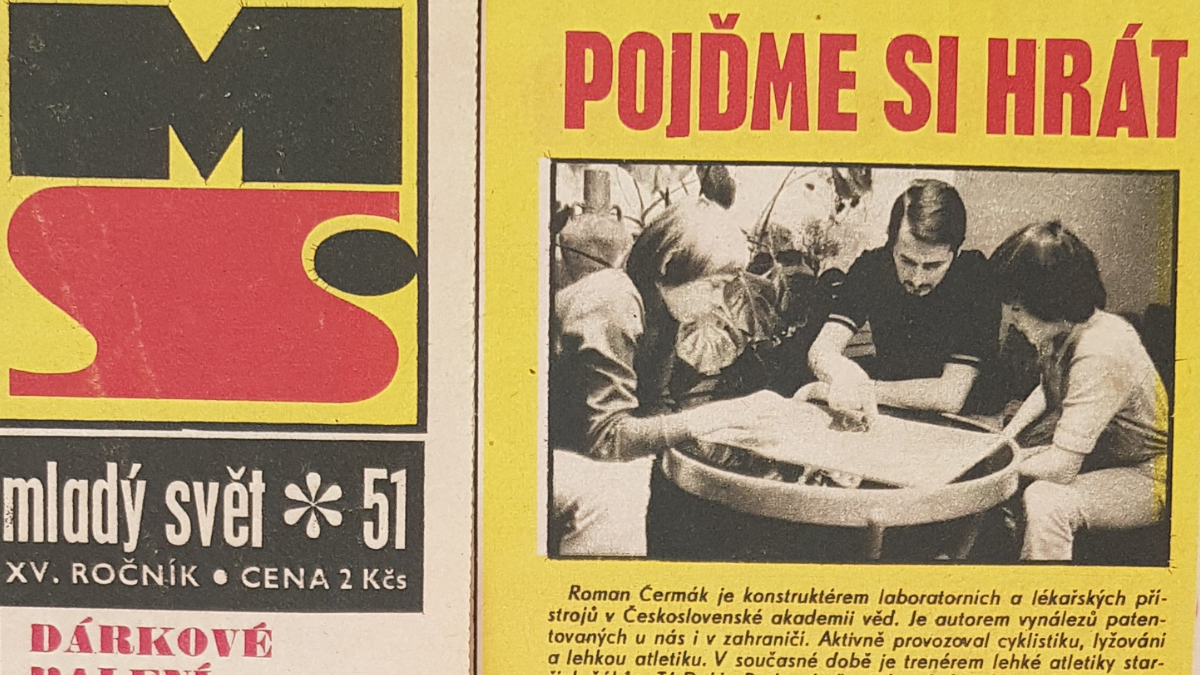Interview with Roman Čermák the elder for Mladý svět
Almost 50 years and we could say that not that much has changed in the world. In 1973, in the 15th year of one of the most read Czechoslovak magazines – Mladý Svět, an interview with Roman Čermák the elder about his board sports games was issued.
Games for olrder children and adults are still missing on the market. Eventhough, noone doubts that even olrder children, young people and adults like to play. Virtual entertainment – social media, computer games appeared, but the magic of board games persists.
We bring you a transcript of the printed interview from the magazince Mladý Svět. You can also see the interview in its originsl in out photo gallery.
Are you going to support us and help us getting the first sports board game on the market?
Thank you in advance for your support. You will be rewarded for example with a great fun game SuperAce Tennis for an unbeatable price!
Everyone who had the chance to test this game was entertained within the first minute. And we believe that you will be too!
.............
Roman Čermák is designer of laboratory and medical devices at the Czechoslovak Academy of Sciences. He is the author of patended inventions in our country and abroad. He was active in cycling, skiing and athletics. He is currently coaching athletics older students at TJ Dukla Praha. He is married, has 2 children and enjoys spending time with them and playing with them. He combined his skills as a designer and athlete and invetned mant board games using a completely new principle.

How many games have you designed?
Cycling road stage race and cycling track races. Summer Olympic Games in athletics – there are 13 disciplines included: running, obstacle course, relay, triple jump, distance run, altitude, pole vault, discus throw.
In the Winter Olympics, there are cross country skiing races, ski jump, downhill skiing, slalom, giant slalom or speed skating.
Additionally, I have already finished works on yachting board games, car racing board games, tennis and I am also working on horse running races. Apart of sports games, I have also produced historical battle ones.
How do the individual games differ?
The rules contain the essence of the individual sports. This allows you to use the same tactical elements which are used in the real sports.
Can you provide an example?
For middle runs, the rules allow you to run conveniently, in the lead of the leading competitor. In road cycling, the rules allow you to ride in a peloton with all the benefits. The player on the top has the chance to escape or can slow down the rest of the peloton. It all depends on tactical decision. The rules follow the facts and the player who falls behind, can hardly catch up with the peloton if he does not cooperate with the order latecomers. The escape is easier in a small group or in a pair. Outside of the peloton and on its top, the confition are more difficult than for the racer who breaks through in these situations. Therefore it is better, for the game tactics, if the figures which are in the lead, take turns and decide their duel just before the finish.
In ski jumping, my game is the same as in the reality. What counts, is not only the length of the jump, but also the reflection and style. All this can be expressed in the rules using numbers thrown in dice.
I have calculated all the achived values in the games, in relation to the actual top performenaces achieved on the real fields. And so, we have record of the track at 100 metres 9.9 (in the game we have managed to get to this result only 3 times in the history), the record at 1500 metres is around 3.34 mins, etc.
What are the games based on?
The games are based on the dice and a plan in which certain rules are followed. Some games, such as 100m run are based on a chance. But for example, in cycling, the effect of luck is reduced to minimum. It usually depends on the tactics which the player and his team is using.
I have also mechanical games. For example, tennis. The game would be easy to produce and the rules correspond exactly with the rules of real tennis. It depends on skills and abilities of each player.
Do you believe it would make sense to produce these games?
The production is no more difficult than of any other board games. And yet, the market lacks this type of board games for older kids as well as for adults. Adults, they like to play too.
At the same time, these games would be a good promotion of the individual sports. People would get familiar with the tactical elements and mentality of verious disciplines while having fun.
Finally, a gift for the readers. Before I find a manufacturer, you can play at least the yachting game. The game is prepared for you on the pages 16-17. We wish you a great game and sailing wind.
Jaroslav Pacovský / Snímek Miroslav Hudec
